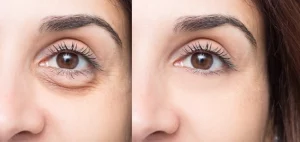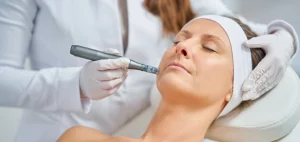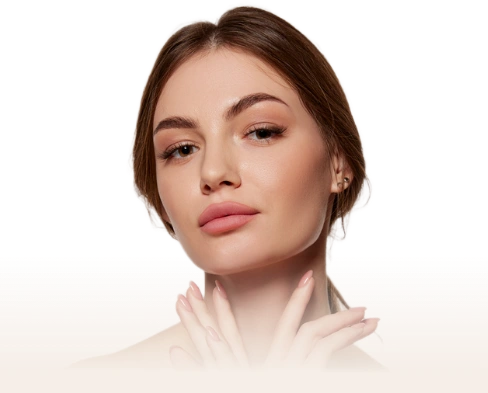Botox, originally approved by the FDA in 2002 for cosmetic use, has a history that dates back to the late 1970s when it was first used medically to treat muscle spasms. It is a purified form of botulinum toxin type A, a neurotoxin that works by temporarily blocking nerve signals to muscles, causing them to relax. This relaxation effect is what makes Botox effective for various cosmetic applications, including the treatment of jowls.
Jowls develop due to the sagging of skin and underlying tissues along the jawline, often exacerbated by the contraction of muscles like the platysma, which pulls the skin downward. By injecting Botox into these muscles, it reduces their activity, thereby lifting and tightening the skin around the jawline and diminishing the appearance of sagging jowls.
This non-invasive approach not only provides a subtle yet noticeable rejuvenation but also avoids the risks and downtime associated with surgical procedures. Botox is important in aesthetic medicine because it offers a safe, FDA-approved treatment option with a well-documented history of efficacy and safety, supported by numerous clinical studies demonstrating its effectiveness in muscle relaxation and wrinkle reduction (see FDA Botox Approval).
Patients seeking to fix jowls should consider Botox because it provides a minimally invasive, customizable, and relatively quick treatment option that can enhance facial contours, improve symmetry, and restore a youthful appearance with minimal recovery time.
What are Botox for jowls and what does Botox do?
Botox for jowls refers to the use of botulinum toxin injections to improve the appearance of sagging skin along the lower jawline, commonly known as jowls. Jowls develop due to the natural aging process, where the skin loses elasticity and muscle tone, causing a drooping or sagging effect along the jawline.
Botox works by temporarily relaxing the muscles that contribute to the downward pull on the skin in the lower face, such as the platysma muscle. By reducing the muscle activity responsible for sagging, Botox helps to lift and tighten the skin, resulting in a smoother and more contoured jawline.
A review in the Journal of Clinical and Aesthetic Dermatology explains that Botox injections can be strategically applied to relax specific muscles, reducing jowl prominence and improving lower face aesthetics (Sadick et al., 2016).
What Causes Sagging Jowls?
Sagging jowls are simply caused by the decrement of elasticity in our skin towards the lower part of our face which is the chin and jawline. It is a timely process as our body’s collagen stops its production typically at the age of 30 to 40.
Jowl sagging is also impacted by the immediate weight loss or gain that stretches or retracts the skin of a particular area which can leave the skin saggy with time.
Another reason for sagging jowls can be external factors such as smoking that can cause premature skin aging.
This affects the facial look telling you that now you need a jawline treatment and Botox for sagging jowls is an ideal cure to make your jawline tight, setting out firm skin on your face.
What Are The Side Effects of Botox for Jowls?
The side effects of Botox for jowls are generally mild but can include the following:
- Bruising and Swelling
- Pain or Discomfort
- Muscle Weakness
- Asymmetry
- Headaches
- Numbness or Tingling
- Difficulty Swallowing or Speaking
These side effects are typically short-lived and resolve on their own. It’s important to have Botox administered by a qualified professional to minimize risks.
Not sure which treatment is right for you? Whether you’re dealing with stubborn skin issues, fatigue, weight concerns, or just want to feel your best — we’ve made it simple. In under 60 seconds, our personalized treatment recommendation planner matches your symptoms to expert-recommended services across aesthetics, wellness, IV therapy, and longevity care. No pressure, just clear guidance.
How To Get Rid of Jowls With Botox?
Getting rid of jowls with Botox involves using the treatment to relax specific muscles that contribute to the sagging skin around the jawline. Botox works by temporarily relaxing the platysma muscle, which is often responsible for pulling the skin downward and creating the appearance of jowls.
By reducing the activity of this muscle, Botox helps to lift and tighten the skin, smoothing out sagging areas and improving the jawline’s contour. This muscle relaxation allows the skin to settle into a firmer, more youthful position without invasive surgery. The treatment is typically quick and involves strategically placed injections to target these muscles effectively. Results usually begin to appear within a few days and can last several months, helping to create a subtle but noticeable reduction in the appearance of jowls.
What are the Treatments for Sagging Jowls?
Here are treatments to get rid of jowls depending largely on the severity of sagging, individual preferences, and desired results. There are several popular options available, ranging from non-invasive treatments to surgical procedures.
Non-Invasive Treatments are ideal for mild to moderate jowl sagging and typically involve minimal downtime.
- Botox works by temporarily relaxing the muscles that pull the skin downward, creating a subtle lift and improved jawline contour.
Pros: Quick procedure, no downtime. Cons: Results are temporary and require repeat treatments.
- Dermal Fillers add volume to lift sagging skin and redefine the jawline, making them well-suited for moderate sagging.
Pros: Immediate results, minimally invasive. Cons: Temporary effects, possible swelling.
- Ultherapy uses ultrasound technology to stimulate collagen production, naturally tightening the skin over time.
Pros: Non-surgical, gradual natural-looking improvement. Cons: Results take a few months to appear.
- Radiofrequency (RF) Treatments stimulate collagen to improve skin elasticity and reduce sagging.
Pros: Non-invasive, painless. Cons: Multiple sessions needed.
Minimally Invasive Options offer more immediate lifting results with limited downtime.
- Thread Lift involves placing dissolvable sutures under the skin to lift and support sagging areas.
Pros: Immediate results, minimal recovery. Cons: Effects last 1-2 years, possible discomfort.
For severe sagging, Surgical Procedures provide the most dramatic and long-lasting improvements.
- Facelift surgery removes excess skin and tightens underlying tissues to restore a youthful jawline and neck contour.
Pros: Long-lasting, significant change. Cons: Invasive, longer recovery, higher cost.
Where To Inject Botox for Jowls?
Botox injections for jowls use specific techniques to enhance facial structure and provide a lifting effect. By targeting key muscles, these injection points help support the jawline and reduce sagging.
Platysma Muscle (Neck and Jawline): Injected to relax the muscle that pulls the skin downward along the jawline and neck, helping to lift and tighten sagging skin.
Masseter Muscle (Jaw Muscle): Sometimes targeted to contour the jawline and reduce muscle tension that can contribute to sagging.
Depressor Anguli Oris: Injected to lift the corners of the mouth and improve the overall appearance of the jawline.
These injection points are carefully chosen to maximize lifting and contouring effects.
Botox For Jowls Before And After
Botox For Sagging Jowls Before and After
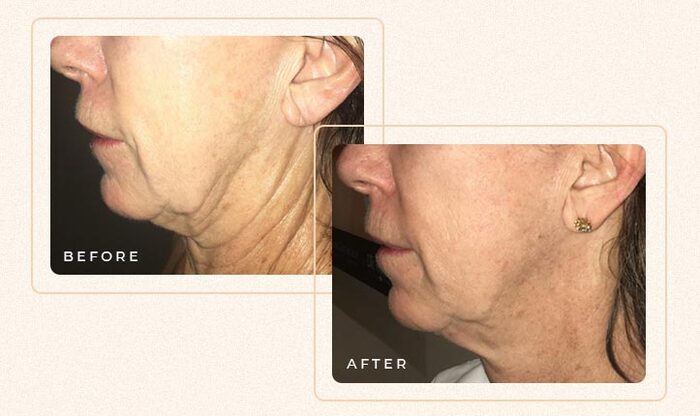
Botox for Jowls Before And After
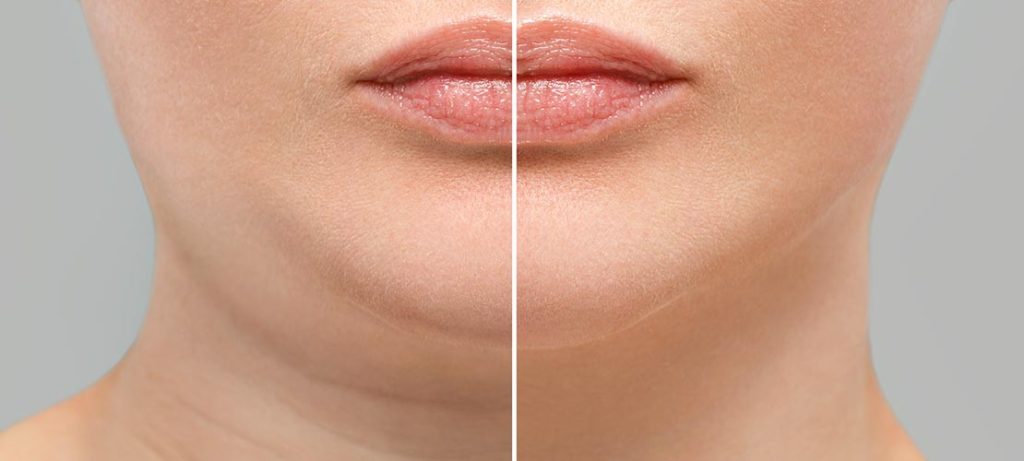
Saggy Cheeks Before and After
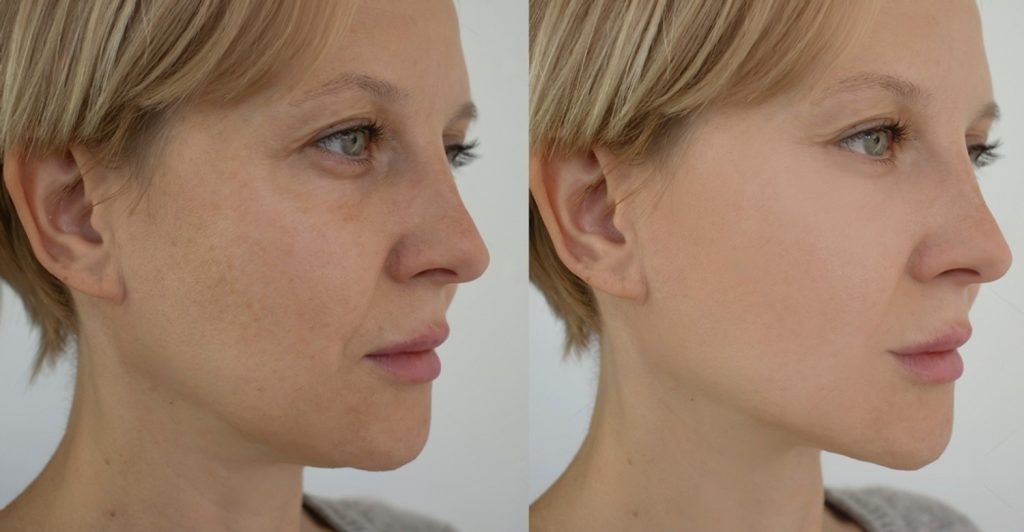
Botox For Neck Sagging Before and After
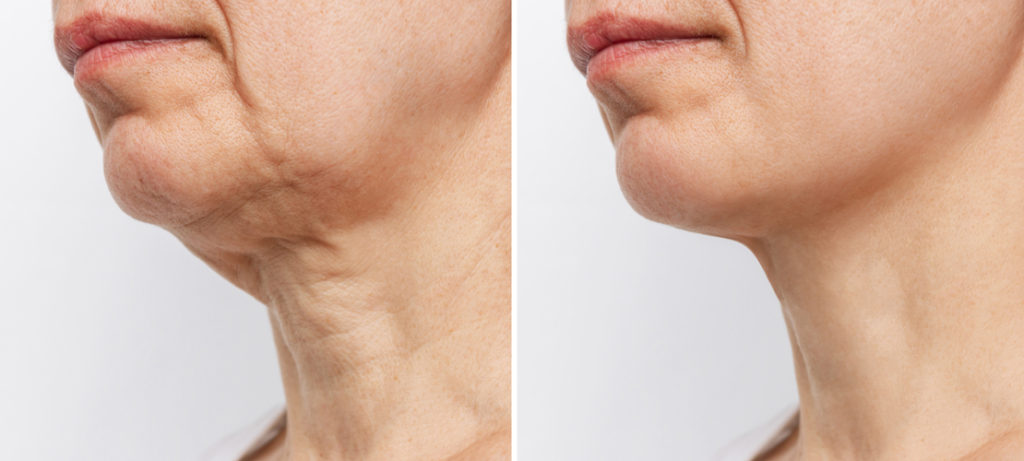
Botox For Jawline Before and After

Botox In Chin Before and After
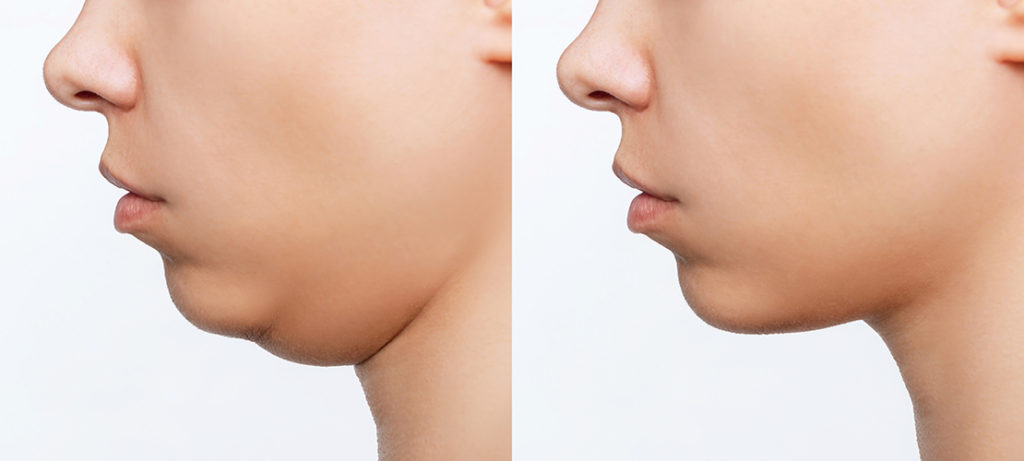
Does Botox Help Jowls?
Yes, Botox helps with jowls by relaxing the muscles that cause sagging skin along the jawline. It targets muscles like the platysma, which pull the skin downward and create the appearance of drooping jowls. By temporarily reducing the activity of these muscles, Botox lifts and tightens the skin, resulting in a smoother and more defined jawline.
While Botox works well for mild to moderate sagging, it often combines with other treatments such as dermal fillers or skin tightening procedures for more noticeable results.
How Many Units of Botox For Jowls?
The number of Botox units required for treating jowls is 20 to 50 units in total, depending on factors such as the severity of sagging, muscle strength, and individual anatomy. While specific dosing guidelines for jowl treatment are not universally standardized, several sources provide insights into typical unit ranges for related areas, which can help estimate the necessary dosage for jowl treatments.
Platysma Bands and Jawline Treatments:
- For treating platysma bands (muscles extending from the jawline to the neck), the recommended Botox dosage ranges from 26 to 36 units in total, depending on the number of bands treated.
- For jawline contouring, Botox injections are typically administered into the masseter muscles, with dosages ranging from 15 to 50 units per side, depending on the desired effect and individual muscle characteristics.
How Much Does Botox For Jowls Cost?
The cost of Botox for jowls typically ranges from $400 to $1,500, depending on several factors such as the number of units required, the provider’s expertise, and the location of the clinic. Botox treatments usually involve between 20 to 30 units per side for jowl correction, with each unit costing anywhere from $10 to $25.
How Long Does Botox For Jowls Last?
Botox for jowls typically lasts between 3 to 4 months. After injection, it takes a few days to up to two weeks for the effects to become noticeable as the muscles around the jawline relax and the skin tightens.
How Many Units of Botox?
The number of Botox units needed varies depending on the treatment area and individual factors. Here’s a general guide for common areas:
- Jowls: 4–10 units
- Jawline: 15–25 units
- Neck: 20–30 units
- Double chin: 10–20 units
- Lower face: 15–30 units
- Cheeks: 10–20 units
How Much for Botox?
The cost of Botox treatments varies depending on factors such as the number of units used, the treatment area, provider expertise, and geographic location. On average, Botox is priced between $10 to $20 per unit. For common treatment areas, typical costs are:
- Per Unit: $10-$20 per unit
- Facelift (non-surgical Botox lifting): $300–$600 per session
- Cheeks: $200–$400
- Neck: $200–$400
- Jaw slimming: $300–$500
- Marionette lines: $150–$300
How Long Does Botox Last?
Jowls: 3–4 months
Chin: 3–4 months
Around Eyes: 3–6 months
Around Mouth: 3–4 months
Barbie Botox: 3–6 months
Forehead: 3–6 months
Neck: 3–6 months
The effects of Botox generally last several months, with maintenance treatments required to prolong the results.
Who Should Get Botox VS Not Get Botox?
Who Should Get Botox? | Who Should Not Get Botox? |
Adults looking to reduce fine lines and wrinkles | Pregnant or breastfeeding women |
Individuals seeking non-surgical facial rejuvenation | Individuals with neurological disorders |
Those with mild to moderate jowls | Those with known allergies to Botox ingredients |
People looking for temporary, reversible results | Individuals with active skin infections in the treatment area |
Patients interested in subtle, natural-looking enhancements | Those with unrealistic expectations regarding results |
Healthy individuals with no contraindications | Those who have had recent facial surgery or trauma |
Which is better for jowls, Botox or Juvéderm?
Aspect | Botox | Juvéderm |
Purpose | Temporarily relaxes muscles to reduce wrinkles | Adds volume to smooth out wrinkles and enhance facial contours |
Primary Use | Treats dynamic wrinkles caused by muscle movement (e.g., forehead lines, crow’s feet) | Treats static wrinkles and adds volume to areas like lips, cheeks, and nasolabial folds |
Active Ingredient | Botulinum toxin type A | Hyaluronic acid |
Onset of Results | 3-7 days after treatment | Immediate results |
Duration of Results | 3-4 months | 6-12 months |
Procedure Time | 10-15 minutes | 15-30 minutes |
Common Treatment Areas | Forehead, crow’s feet, frown lines, jowls | Lips, cheeks, nasolabial folds, under-eye area |
Reversibility | Effects wear off naturally over time | Reversible with hyaluronidase enzyme |
Pain Level | Minimal, slight discomfort | Minimal, slight discomfort |
Downtime | Little to no downtime | Little to no downtime |
Ideal For | Smoothing dynamic wrinkles, preventing new lines | Restoring lost volume, contouring facial features |
Which is better for jowls, Dysport or Botox?
Aspects | Botox | Dysport |
Active Ingredient | Botulinum toxin type A | Botulinum toxin type A |
Molecular Structure | Smaller protein complex | Larger protein complex |
Onset of Results | 3-7 days after treatment | 2-3 days after treatment |
Duration of Results | 3-4 months | 3-4 months |
Spread of Injection | More precise, stays closer to the injection site | Diffuses more widely, covering larger areas |
Ideal Treatment Areas | Smaller areas like crow’s feet and frown lines | Larger areas like the forehead |
Dosing Units | Generally requires fewer units per treatment | Typically requires more units per treatment |
Cost | Usually slightly higher per unit | Often slightly lower per unit |
Pain Level | Minimal, slight discomfort | Minimal, slight discomfort |
Downtime | Little to no downtime | Little to no downtime |
FDA Approval | Approved for cosmetic use in 2002 | Approved for cosmetic use in 2009 |
Note: If you are looking for more detailed difference between Dysport and Botox this guide is the perfect fit for you.
Where Can You Get Botox Treatments in NYC?
There are many treatments you can opt for treating sagging jowls because it can be frustrating watching your facial appearance so droopy and saggy.
Dr. Syra Aesthetics, a known aesthetic clinic in NYC provides every possible Botox treatment for covering your wrinkles, frown lines, sagging jowls, lip fillers, and much more.
At Dr. Syra Aesthetic, we have expert aestheticians guiding you with the best treatments as they also have expertise in sagging jowls treatment with Botox.
Frequently Asked Questions
Which is better for jowls, Botox or filler?
Fillers are generally better for lifting and contouring jowls, while Botox can be used to relax surrounding muscles for a smoother appearance.
Is filler good for sagging jowls?
Yes, fillers are effective for lifting and redefining sagging jowls, restoring a more youthful jawline.
Can Botox help jowls?
Botox can help by relaxing muscles that pull the jowls downward, providing a subtle lift, but it’s not as effective as fillers.
Will Ultherapy get rid of jowls?
Ultherapy can help tighten the skin and reduce the appearance of jowls by stimulating collagen production.
Does masseter Botox cause jowls?
Masseter Botox could potentially cause jowls if it leads to volume loss in the lower face, but this is usually minimal and depends on individual anatomy.
Can Botox help lift sagging jowls?
Botox can help with sagging jowls by relaxing the muscles that contribute to the sagging, but it is generally more effective for smaller, targeted areas. For significant lifting, other treatments like fillers or surgery might be recommended.
Does masseter Botox cause jowls?
Masseter Botox does not directly cause jowls. It works by relaxing and slimming the masseter muscle at the jaw angle, primarily improving jawline contour and reducing issues like teeth grinding.
Also read
- Sagging Jowls: How You can rid of them
- BOTOX: Things to be Careful of Before and After the Treatment
- Botox Brow Lift Before And After Everything You Need To Know
- Jeuveau vs Botox: Differences You Should Know
- Botox and Pregnancy
- Sagging Jowls: How you can rid of them
- How Many Units Of Botox For The Forehead First Time?
- How Long Does Botox Injections Last?

About The Author
Dr. Syra Hanif M.D.
Board Certified Primary Care Physician
Dr. Hanif is the Director of Aesthetic Medicine. She is a board-certified physician in Aesthetic Medicine who specializes in using non-surgical alternatives in order to enhance one's appearance through Botox and fillers.
Read More








